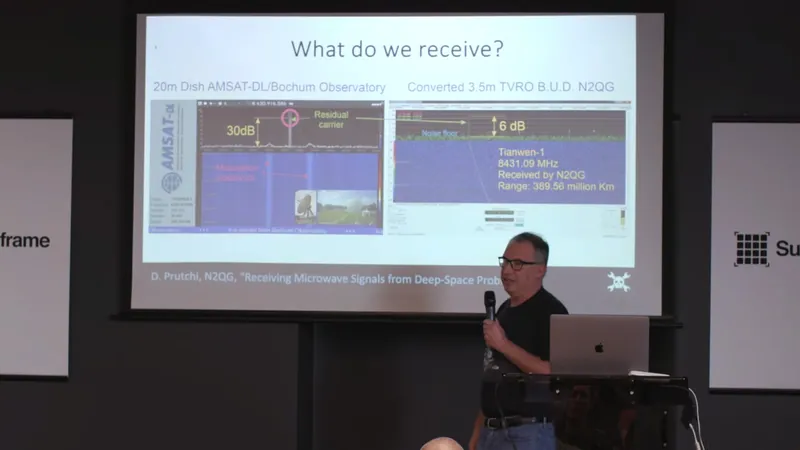
Unlocking the Secrets of Deep Space: How Hobbyists Are Tuning Into Microwave Signals from Space Probes
2024-10-10
Author: Ting
A Community of Space Explorers
David isn’t alone in this endeavor; he belongs to a niche community of passionate hobbyists who thrive on the challenge of deciphering signals from far-off spacecraft. His backyard setup, featuring a series of parabolic dishes, is a testament to his commitment to chasing these faint signals. While his equipment may be dwarfed by NASA’s robust 70-meter antennas, it showcases the ingenuity and determination of amateur astronomers everywhere.
David likens the experience of tuning into these distant signals to "watching grass grow," as it often involves hours of patiently observing monitor readings for any sign of activity. The intrigue lies in the numbers: a spacecraft like JUNO emits around 28 watts towards a 2.5-meter dish, but with Jupiter positioned some 715 million kilometers away, the signal must overcome a daunting path loss of approximately -288 dB before it can be received.
The Challenges of Distance
His 3.5-meter dish allows for 47 dBi gain, enabling him to detect signals even as weak as -152 dBm. Although amateur setups can’t compete with the full signal returns from larger dishes, enthusiasts like David can still glean vital information. By analyzing the Doppler shift in the received signal, hobbyists can determine if they’re genuinely intercepting space transmissions or merely picking up interference from local sources.
In a remarkable twist, some hobbyists have succeeded in decoding video feeds from certain spacecraft. However, as David notes, advancements in encryption by companies like SpaceX have made this task significantly more challenging.
How to Get Started in Deep Space Listening
For those interested in joining this thrilling hobby, David outlines the basics: you’ll need a parabolic dish and software-defined radio. S-band frequencies are where most deep-space communications occur, but if you want to delve into X-band frequencies, a downconverter will be necessary to accommodate signal losses over cable. Accurate time synchronization using atomic clocks is also essential for stable reception.
David's talk delved into intricate setup optimization methods, including calibrating antennas by tuning into signals from the Sun and Moon or monitoring geostationary military satellites. These techniques not only improve reception quality but also provide insight into the performance of the entire station setup.
Join the Adventure
Listening to deep-space signals may sound like science fiction, but with the right tools and knowledge, anyone can embark on this extraordinary adventure. David’s presentation serves as an inspiring gateway for budding enthusiasts to unravel the sound of the cosmos.
With more channels open than ever before, now is the perfect time to dive into the thrilling world of amateur deep-space communication. Whether you’re a seasoned techie or a curious beginner, the universe is calling—so tune in and amplify your cosmic experience!




 Brasil (PT)
Brasil (PT)
 Canada (EN)
Canada (EN)
 Chile (ES)
Chile (ES)
 España (ES)
España (ES)
 France (FR)
France (FR)
 Hong Kong (EN)
Hong Kong (EN)
 Italia (IT)
Italia (IT)
 日本 (JA)
日本 (JA)
 Magyarország (HU)
Magyarország (HU)
 Norge (NO)
Norge (NO)
 Polska (PL)
Polska (PL)
 Schweiz (DE)
Schweiz (DE)
 Singapore (EN)
Singapore (EN)
 Sverige (SV)
Sverige (SV)
 Suomi (FI)
Suomi (FI)
 Türkiye (TR)
Türkiye (TR)